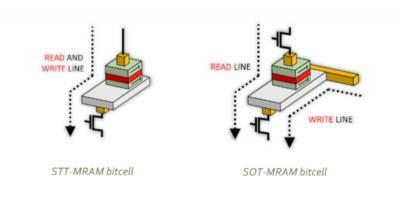New material could finally enable fast, efficient and dense SOT-MRAM devices
SOT-MRAM (spin-orbit torque MRAM) has the potential to challenge STT-MRAM, as it is a faster, denser and much more efficient memory technology. Up until now, though, no suitable material that features both high electrical conductivity and a high spin hall effect was developed.
Now researchers at the Tokyo Institute of Technology have developed a new thin film material made from bismuth-antimony (BiSb) that is a topological insulator that simultaneously achieves a colossal spin Hall effect and high electrical conductivity - which means it could be used to create SOT-devices.
